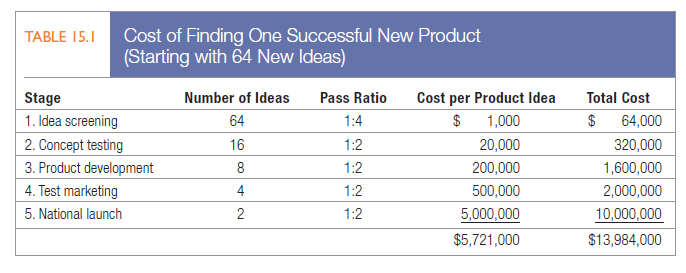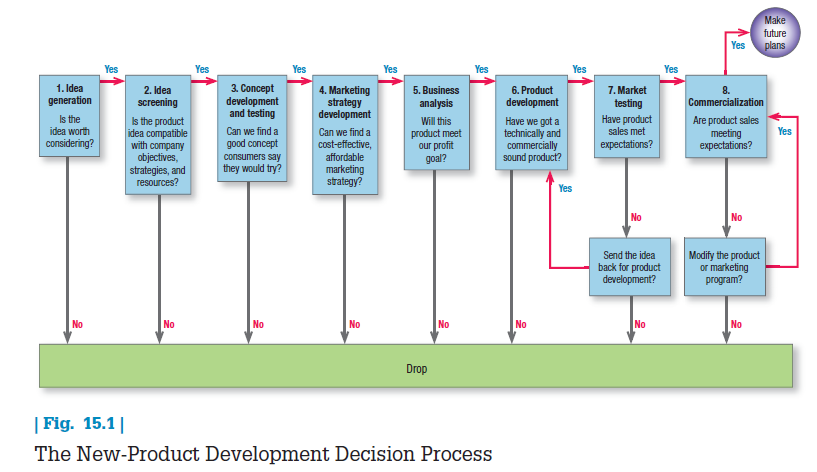Many companies use customer-driven engineering to develop new products, incorporating customer preferences in the final design. Some, such as SAP, have relied on organizational changes to help develop more successful new products.33
SAP After a series of high-profile acquisitions of firms such as SuccessFactors, Sybase, and Ariba, business software leader SAP set out to create internal start-ups to pursue new business ideas in adjacent markets or just in markets where large companies typically did not operate. Hiring entrepreneurs from inside and outside its ranks, the company treated every project much like a typical start-up, making funding decisions like an investor at each stage of the new-product development process. In formulating their business ideas, the start-ups had to be cognizant of SAP’s global footprint and the need to satisfy regulatory requirements around the world, but they could also tap into its strong relationships with clients. One success was the development of HANA, the company’s real-time database analysis technology. HANA was designed to be a powerful computing platform, so SAP also enlisted the developer community to discover applications that could be part of that platform.
New-product development requires senior management to define business domains, product categories, and specific criteria. One company established the following acceptance criteria:
- The product can be introduced within five years.
- The product has a market potential of at least $50 million and a 15 percent growth rate.
- The product can provide at least 30 percent return on sales and 40 percent on investment.
- The product can achieve technical or market leadership.
1. BUDGETING FOR NEW-PRODUCT DEVELOPMENT
R&D outcomes are so uncertain that it is difficult to use normal investment criteria when budgeting for new-product development. Some companies simply finance as many projects as possible, hoping to achieve a few winners. Others apply a conventional percentage-of-sales figure or spend what the competition spends. Still others decide how many successful new products they need and work backward to estimate the required investment.

Table 15.1 shows how a company might calculate the cost of new-product development. The new-products manager at a large consumer packaged-goods company reviewed 64 ideas. Sixteen passed the screening stage and cost $1,000 each to review at this point. Half, or eight, survived the concept-testing stage, at a cost of $20,000 each. Four survived the product-development stage, at a cost of $200,000 each. Two did well in the test market, costing $500,000 each. When they were launched, at a cost of $5 million each, one was highly successful. Thus, this one successful idea cost the company $5,721,000 to develop, while 63 others fell by the wayside for a total development cost of $13,984,000. Unless the company can improve its pass ratios and reduce costs at each stage, it will need to budget nearly $14 million for each successful new idea it hopes to find.
Hit rates vary. Inventor Sir James Dyson claims he made 5,127 prototypes of his bagless, transparent vacuum cleaner over a 14-year period before getting it right, resulting in the best-selling vacuum cleaner by revenue in the United States with more than 20 million sold and annual revenue of more than $1.5 billion. He doesn’t lament his failures, though: “If you want to discover something that other people haven’t, you need to do things the wrong way . . . watching why that fails can take you on a completely different path.” His latest successes: the Airblade, an energy-efficient hand drier for public restrooms, and the Air Multiplier, a bladeless table fan.
3. ORGANIZING NEW-PRODUCT DEVELOPMENT
Companies handle the organizational aspect of new-product development in several ways. Many assign responsibility to product managers. But product managers are often busy managing existing lines and may lack the skills and knowledge to develop and critique new products.
Kraft and Johnson & Johnson have employed new-product managers who report to category managers. Westinghouse has used growth leaders—a full-time job for its most creative and successful managers.35 Intuit uses a team of innovation catalysts—design-thinking coaches—to help mangers work on initiatives throughout the organization.36 Some companies have a high-level management committee charged with reviewing and approving proposals.
Large companies often establish a new-product department headed by a manager with substantial authority, access to top management, and responsibility for generating and screening new ideas, working with the R&D department, and carrying out field testing and commercialization. Eli Lilly put every department engaged in the process of turning molecules into medicine—from R&D staff to the team who seek FDA approval—under one roof to improve efficiency and cut development time.37
Some firms open innovation centers in new geographical locations to better design new products for those regions. Diageo, purveyor of premium spirits, beers, and wine, opened such a center in Singapore to support the company’s Asian growth initiatives.38
CROSS-FUNCTIONAL TEAMS 3M, Dow, and General Mills have assigned new-product development to venture teams, cross-functional groups charged with developing a specific product or business. These “intrapreneurs” are relieved of other duties and given a budget, time frame, and “skunkworks” setting.
Skunkworks are informal workplaces, sometimes garages, where intrapreneurial teams work to develop new products. As it transforms itself from a PC company to a solutions company in the cyber-security and data center design and management business, Dell has established separate headquarters for its new units with marching orders to think entrepreneurially.39
Communities of practice are often housed on internal Web sites where employees from different departments are encouraged to share knowledge and skills with others.40 Japanese pharmaceutical maker Esai Co. has formed more than 400 innovation communities. One helped develop a jelly-like medication for Alzheimer’s patients that is easy to swallow. Of the 29 innovation community projects commissioned by grocery retailer Supervalu, 22 were implemented over a 10-year period.41
Cross-functional teams can collaborate and use concurrent new-product development to push new products to mar- ket.42 Concurrent product development resembles a rugby match, with team members passing the new product back and forth as they head toward the goal. Using this system, Allen-Bradley Corporation (a maker of industrial controls) was able to develop a new device in just two years, down from six under its old system. Cross-functional teams help ensure that engineers are not driven to create a “better mousetrap” when potential customers don’t need or want one.
CROWDSOURCING The Internet lets companies engage external participants in the new-product development process in rich and meaningful ways. Through crowdsourcing, these paid or unpaid outsiders can offer needed expertise or a different perspective on a task or project that might otherwise be overlooked.
Companies such as Edison Nation and the Big Idea Group have sprung up to tap into crowdsourcings possibilities.43 Quirky combines its own design, branding, engineering, and sales teams with 864,000 online participants, forming a community for devising new products. The company sifts through thousands of submissions weekly to identify eight to ten ideas that merit greater scrutiny. For the chosen ideas, it will design, manufacture, and sell the product. Inventors and any members of the community who contribute to the design and branding get a cut.44
As another example, P&G wanted to create a dishwashing detergent “smart enough” to reveal when the right amount of soap has been added to a sink full of dirty plates. With its formidable in-house research and development team stumped, the company went to InnoCentive, a spin-off of Eli Lilly, which handed the problem over to its global network of volunteer tinkerers—professionals, retired scientists, students, and others. As it happened, an Italian chemist working from her home laboratory had pioneered a new kind of dye that turns dishwater blue when a certain amount of soap is added. For $30,000 in prize money, P&G had a solution.45
STAGE-GATE SYSTEMS Many top companies use the stage-gate system to divide the innovation process into stages, with a gate or checkpoint at the end of each.46 The project leader, working with a cross-functional team, must bring a set of known deliverables to each gate before the project can pass to the next stage. To move from the business plan stage into product development requires a convincing market research study of consumer needs and interest, a competitive analysis, and a technical appraisal. Senior managers review the criteria at each gate to make one of four decisions: go, kill, hold, or recycle.
For example, at Tata Steel, initial ideas generated by “trend scouting” become future pipeline developments and then, in turn, priority product and process developments and finally product and process implementations. About 50 to 100 ideas are generated for every one that makes it to implementation, and at any point in time, 50 to 70 priority product or process development projects are in the pipeline before the final-phase gate. 47
The stages in the new-product development process are shown in Figure 15.1. Many firms have parallel sets of projects working through the process, each at a different stage.48 Think of the process as a funnel: A large number of initial new-product ideas and concepts are winnowed down to a few high-potential products that are ultimately launched. But the process is not always linear. Many firms use a spiral development process that recognizes the value of returning to an earlier stage to make improvements before moving forward.49
Stage-gate systems make the innovation process visible to all and clarify the project leader’s and team’s responsibilities at each stage.50 The gates or controls should not be so rigid, however, that they inhibit learning and the development of novel products.51 These systems have evolved over the years as users have made them more flexible, adaptive, and scalable; built in better governance; integrated portfolio management; incorporated accountability and continuous improvement; and adapted the process to include open innovation and input from sources outside the company at different stages.52

Source: Kotler Philip T., Keller Kevin Lane (2015), Marketing Management, Pearson; 15th Edition.

I have been absent for a while, but now I remember why I used to love this website. Thank you, I’ll try and check back more frequently. How frequently you update your web site?